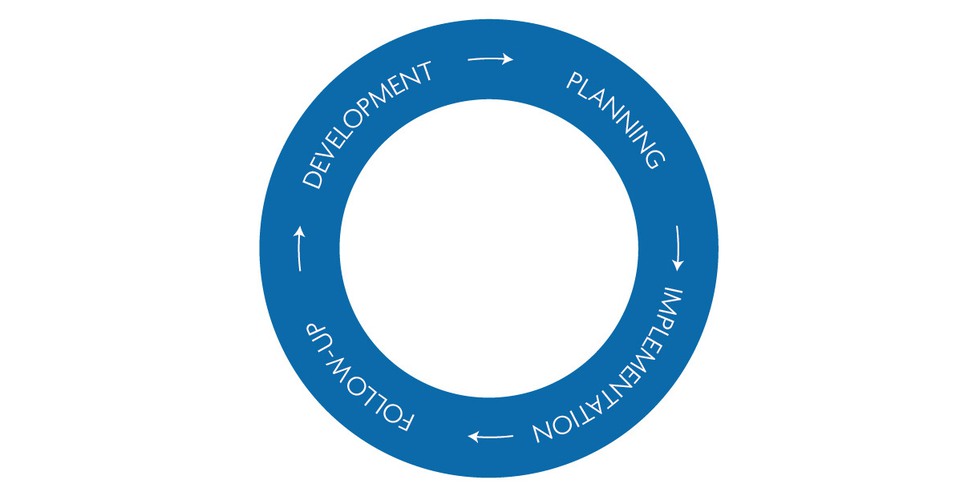The University works according to a model of four clear and connected phases i the improvement cycles. The phases are planning, implementation, follow-up, and development:
Planning
This is what we are going to do. This is what we are going to achieve. This is how we are
going to do it.
In the planning phase, it is defined what is going to be done and how it is going to be done,
based on the applicable conditions. An important starting point for planning is what has
come to light in the previous improvement cycle. Experiences and results from it shall be
utilised.
Implementation
We do our work.
In the implementation phase, the plans are implemented.
Follow-up
Did it turn out the way we wanted? Was the goal reached? Why did it turn out the way it
did?
In the follow-up phase, the implementation of both the result and the modus operandi are
followed up. Reflection on various aspects is included, such as whether the conditions were
sufficient, whether work took place in a way that was appropriate and efficient, etc..
Feedback from the follow-up shall be given to relevant parties, and their perception of the
result should be taken into consideration.
Development
Now we are going to do this. We will do this instead. This is how we can improve.
In the development phase, it is decided which measures are to be taken, based on the
follow-up and reflection that has taken place. It may mean that new operations are to be
developed, that existing operations are to be developed further, or phased out. Changes may
also be necessary when it comes to conditions and modi operandi. Planned measures are to
be communicated to relevant parties.

